Getting Started with Voice API Lorna Mitchell
A presentation at Vonage Campus in October 2019 in San Francisco, CA, USA by Lorna Jane Mitchell
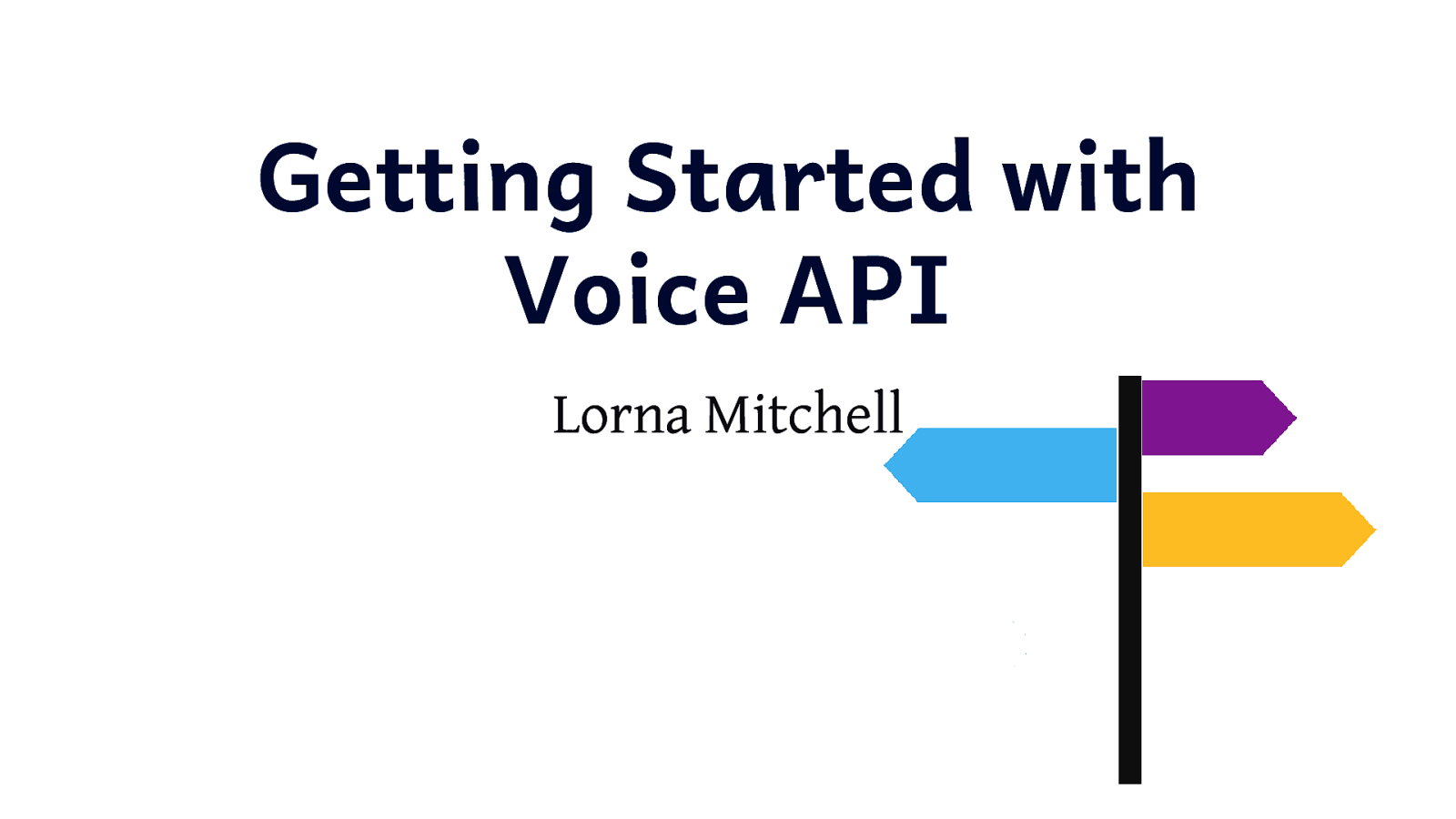
Getting Started with Voice API Lorna Mitchell
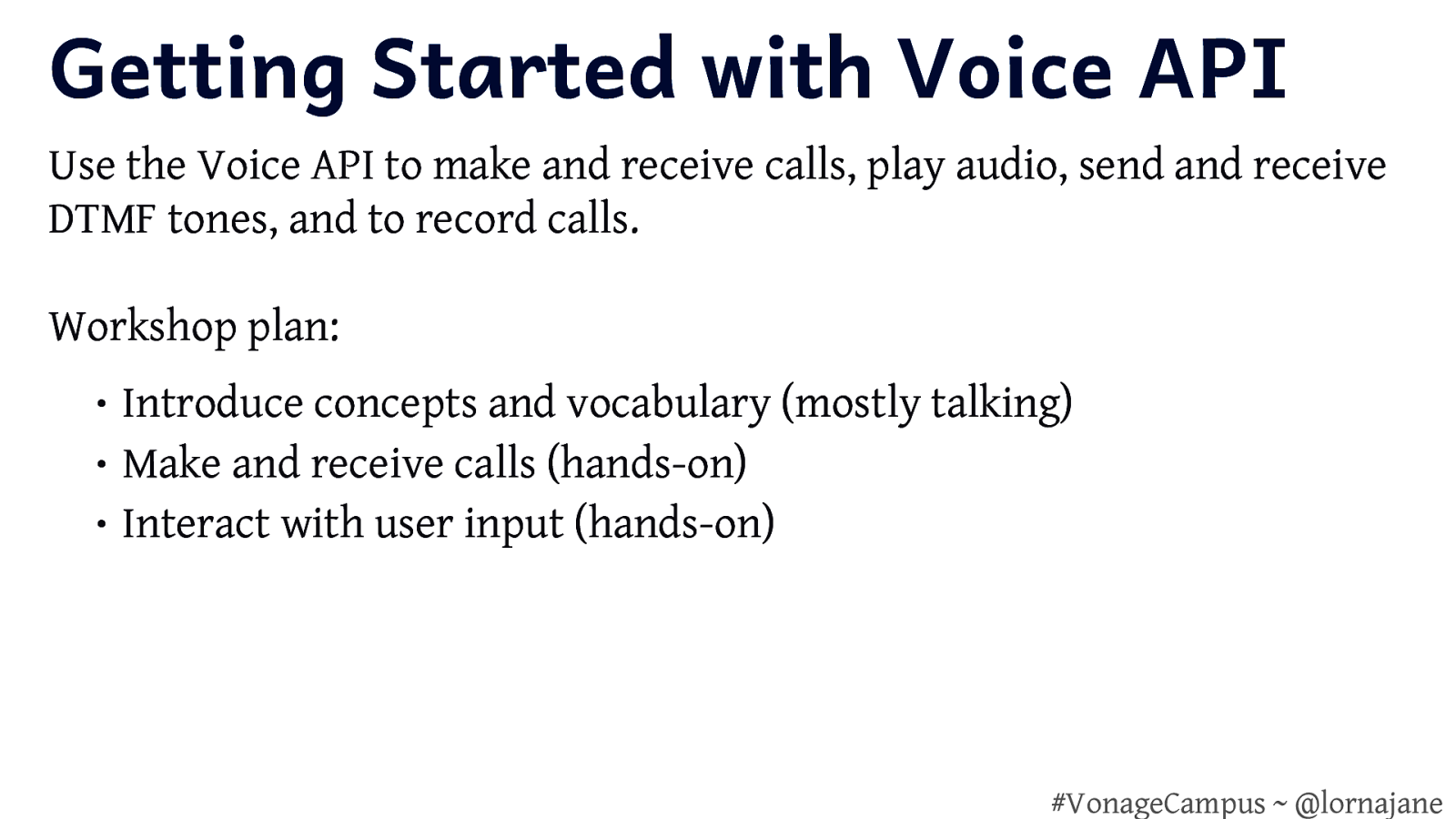
Getting Started with Voice API Use the Voice API to make and receive calls, play audio, send and receive DTMF tones, and to record calls. Workshop plan: • Introduce concepts and vocabulary (mostly talking) • Make and receive calls (hands-on) • Interact with user input (hands-on) #VonageCampus ~ @lornajane
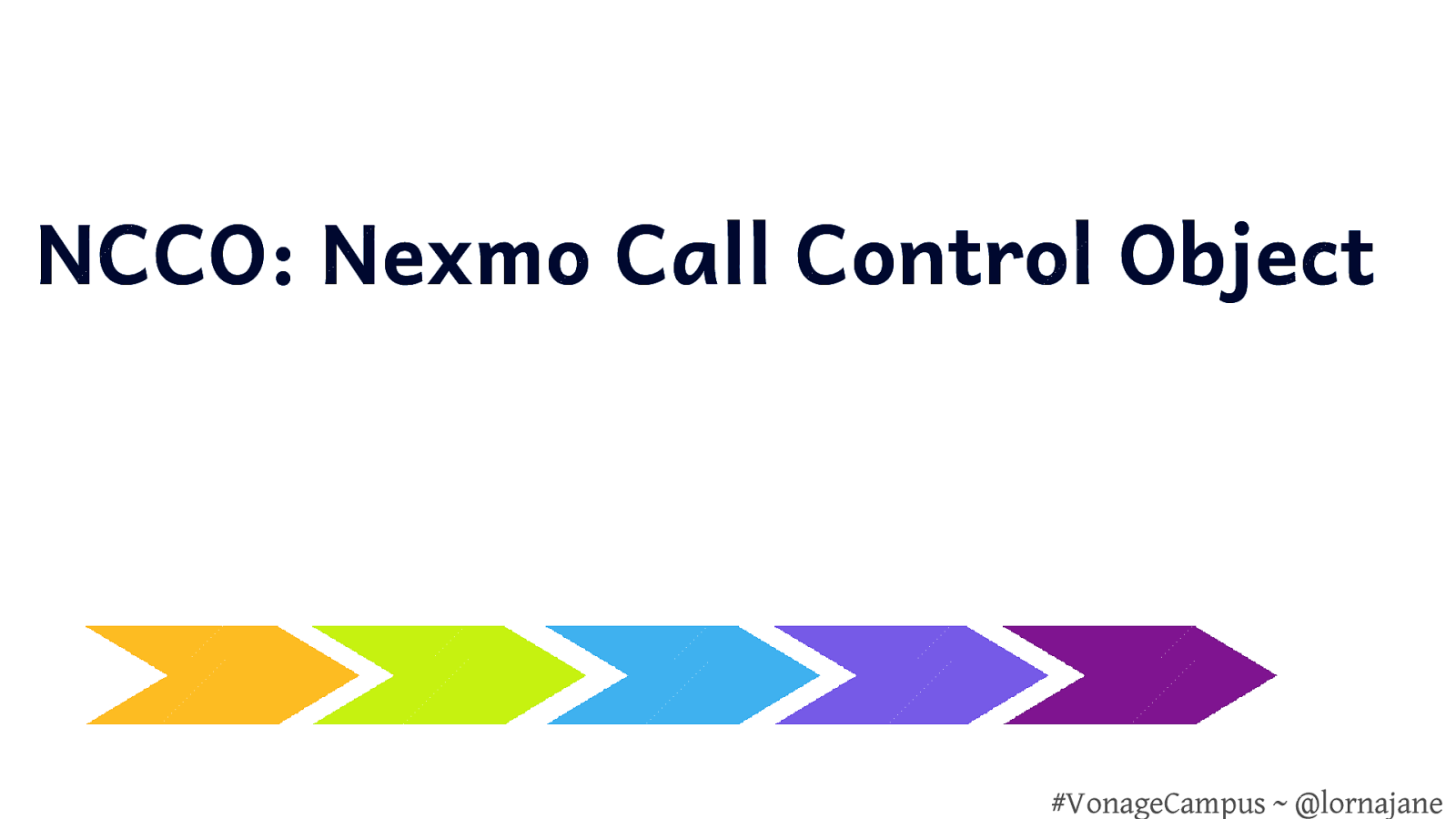
NCCO: Nexmo Call Control Object #VonageCampus ~ @lornajane
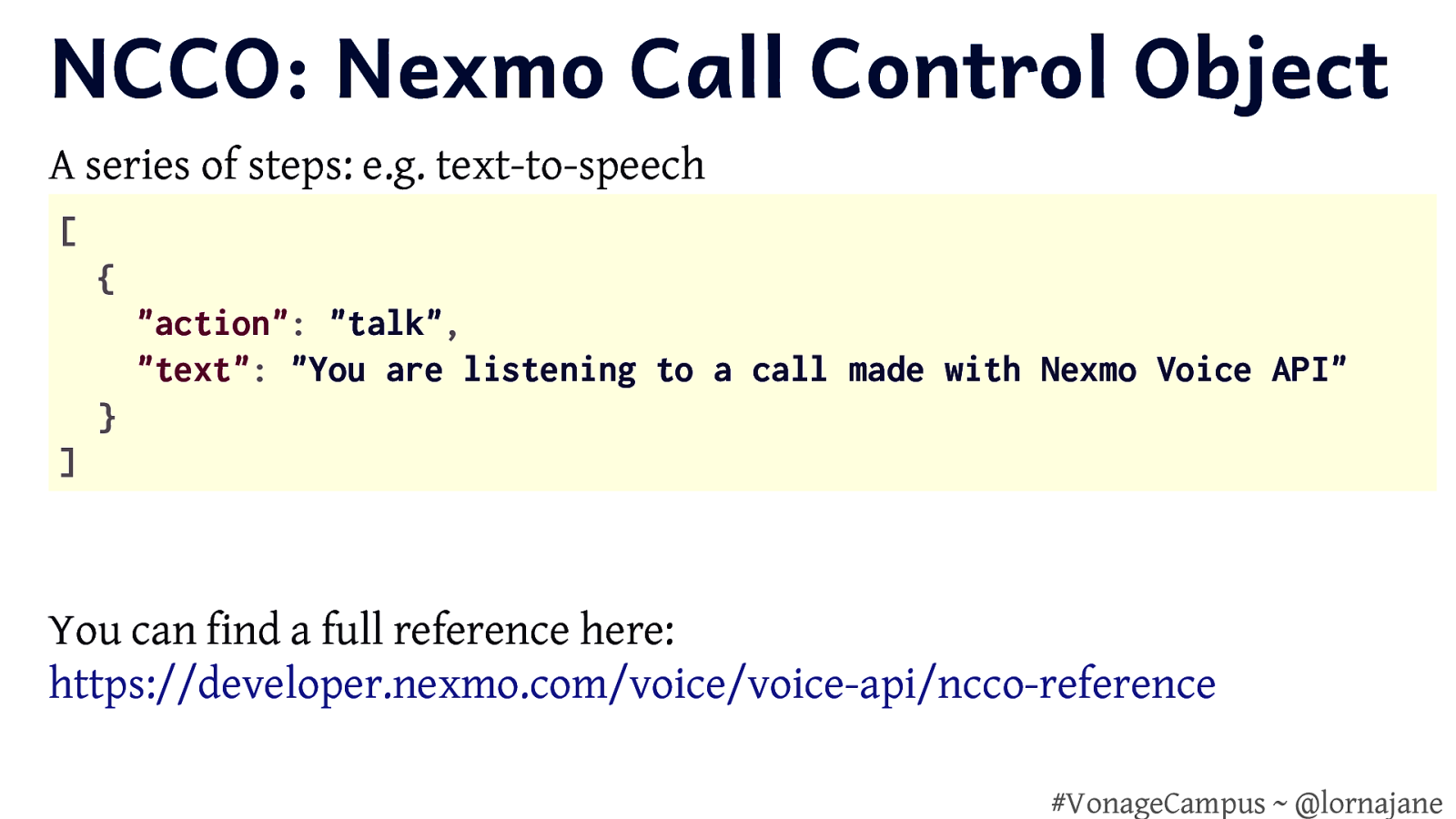
NCCO: Nexmo Call Control Object A series of steps: e.g. text-to-speech [ { “action”: “talk”, “text”: “You are listening to a call made with Nexmo Voice API” } ] You can find a full reference here: https://developer.nexmo.com/voice/voice-api/ncco-reference #VonageCampus ~ @lornajane
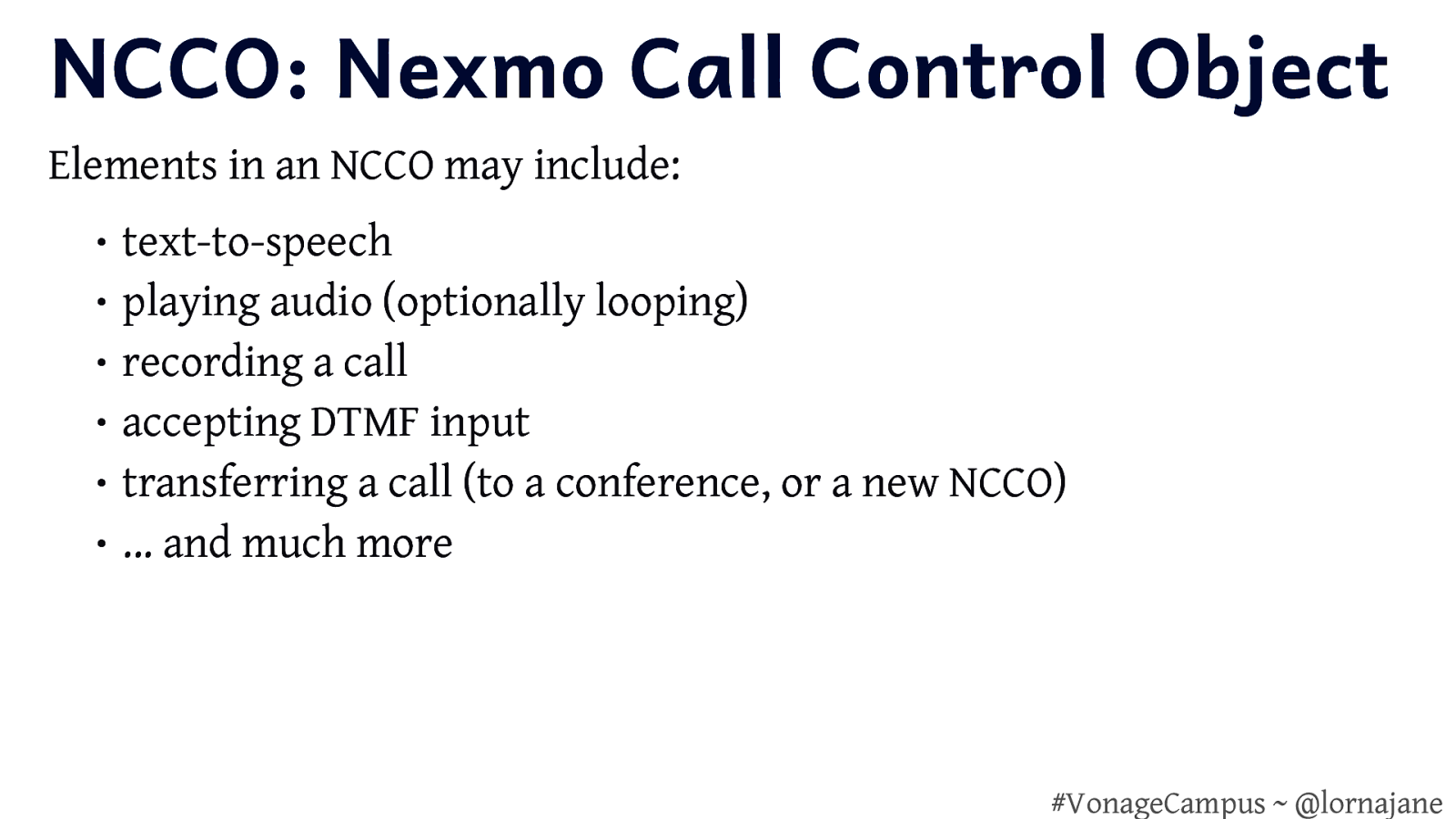
NCCO: Nexmo Call Control Object Elements in an NCCO may include: • text-to-speech • playing audio (optionally looping) • recording a call • accepting DTMF input • transferring a call (to a conference, or a new NCCO) • … and much more #VonageCampus ~ @lornajane
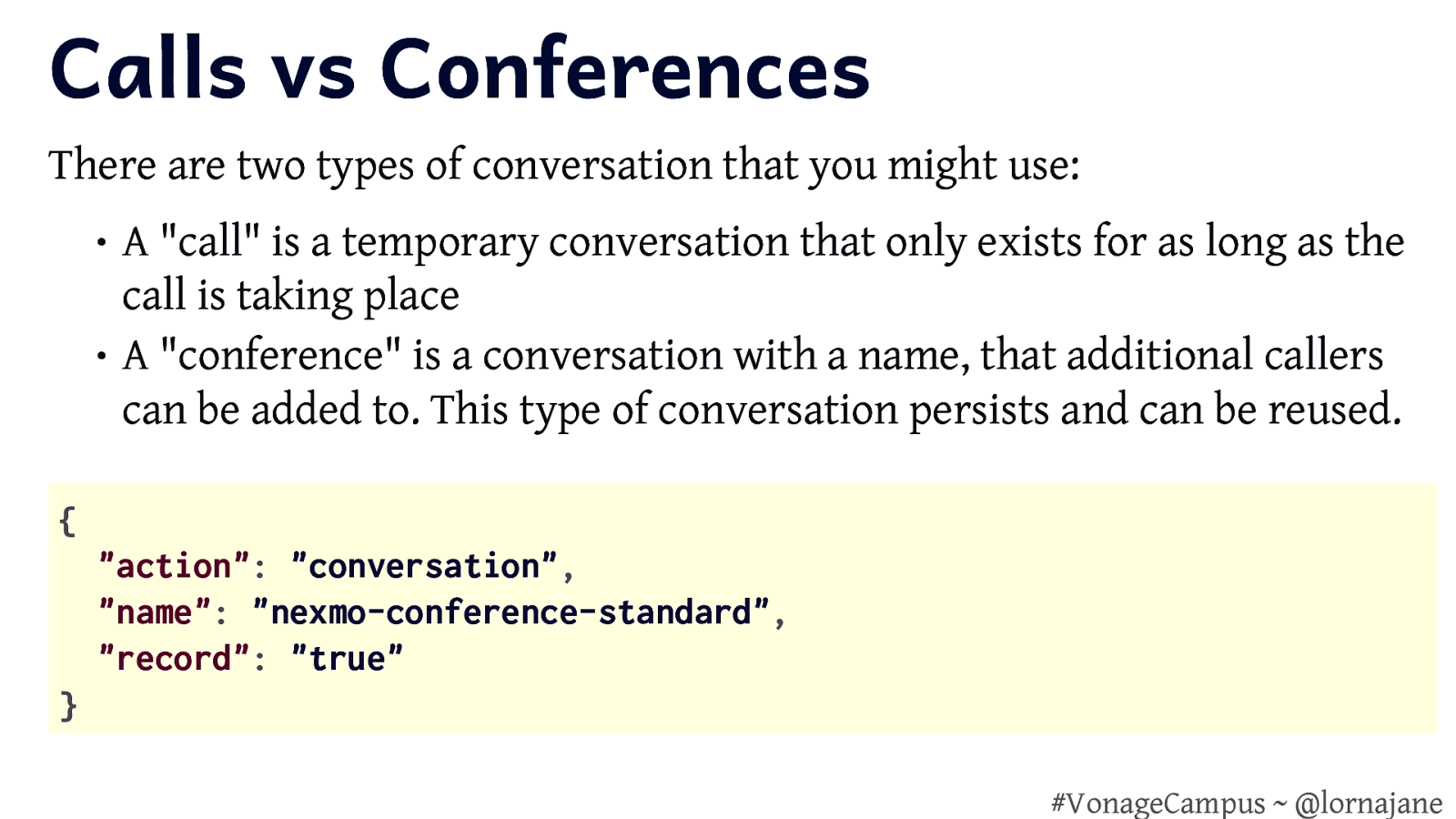
Calls vs Conferences There are two types of conversation that you might use: • A “call” is a temporary conversation that only exists for as long as the call is taking place • A “conference” is a conversation with a name, that additional callers can be added to. This type of conversation persists and can be reused. { “action”: “conversation”, “name”: “nexmo-conference-standard”, “record”: “true” } #VonageCampus ~ @lornajane
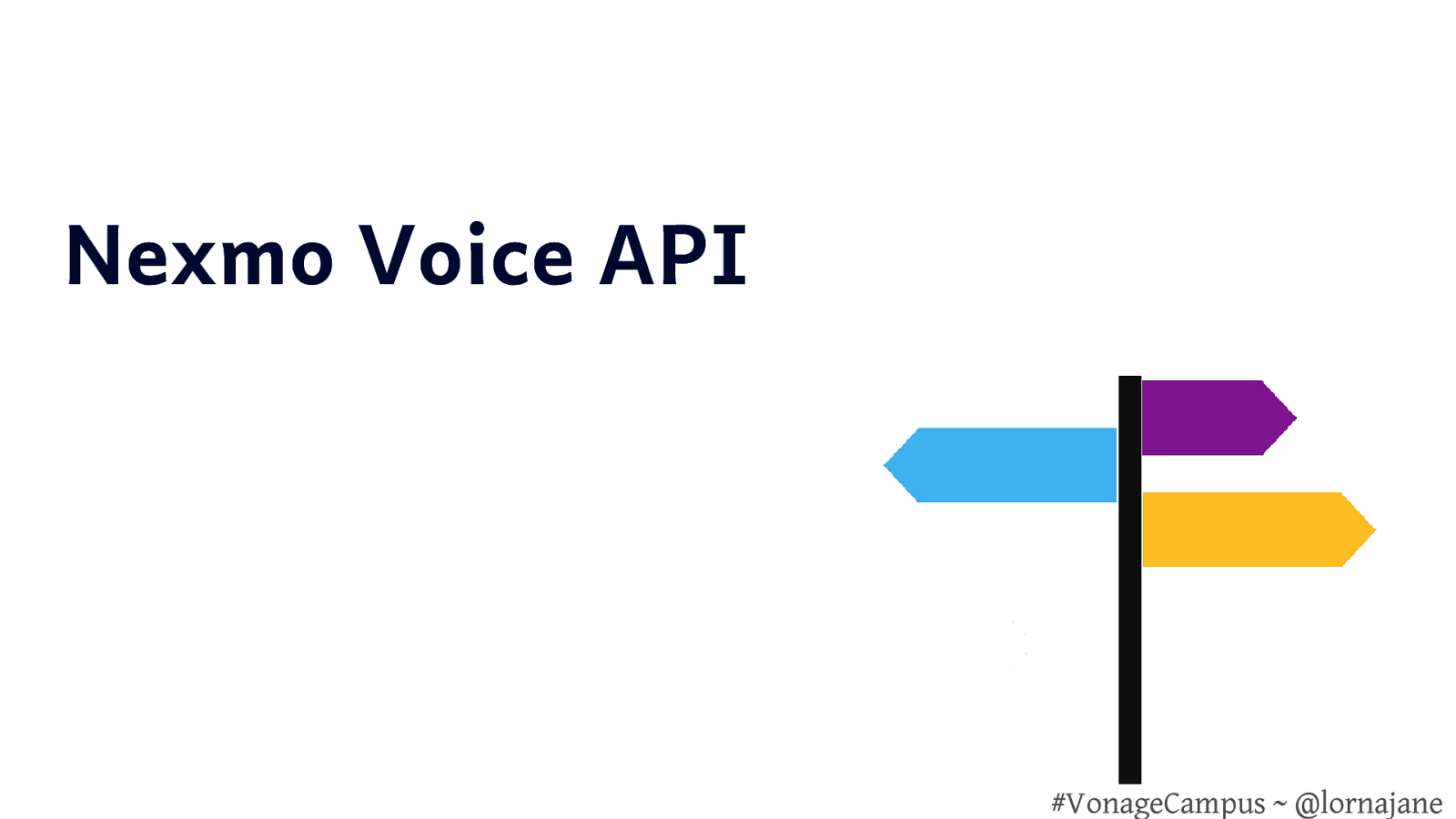
Nexmo Voice API #VonageCampus ~ @lornajane
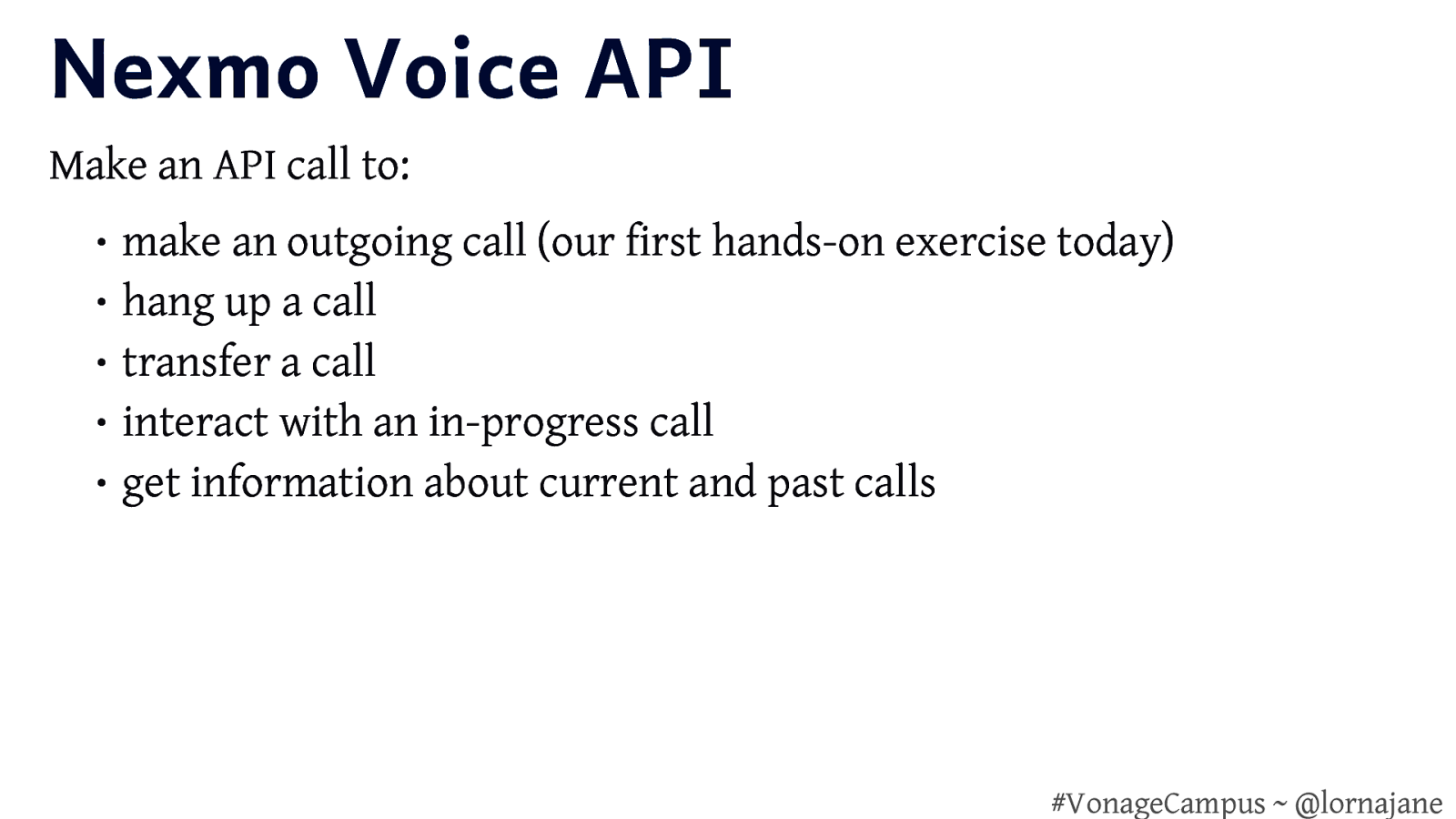
Nexmo Voice API Make an API call to: • make an outgoing call (our first hands-on exercise today) • hang up a call • transfer a call • interact with an in-progress call • get information about current and past calls #VonageCampus ~ @lornajane
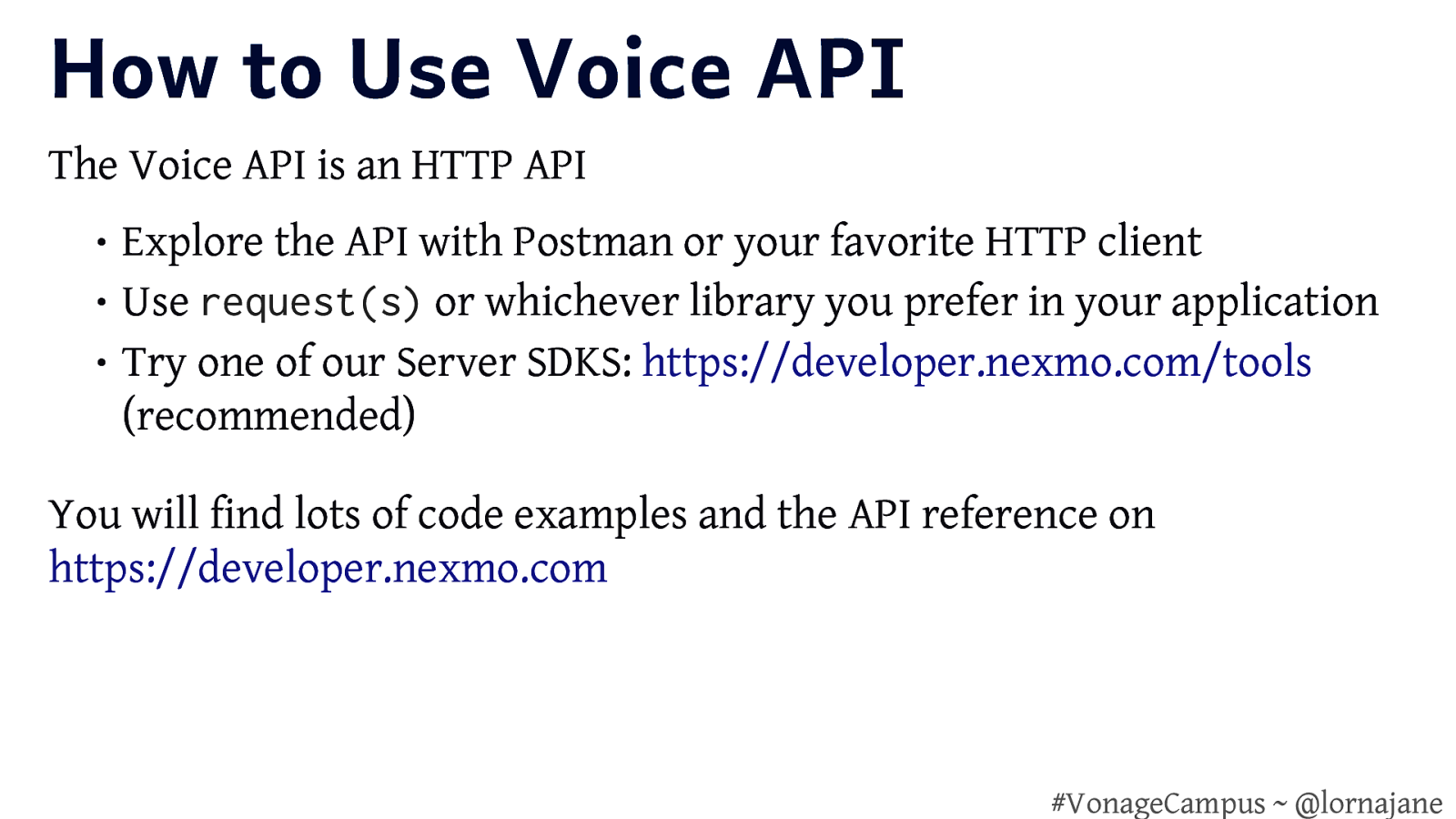
How to Use Voice API The Voice API is an HTTP API • Explore the API with Postman or your favorite HTTP client • Use request(s) or whichever library you prefer in your application • Try one of our Server SDKS: https://developer.nexmo.com/tools (recommended) You will find lots of code examples and the API reference on https://developer.nexmo.com #VonageCampus ~ @lornajane
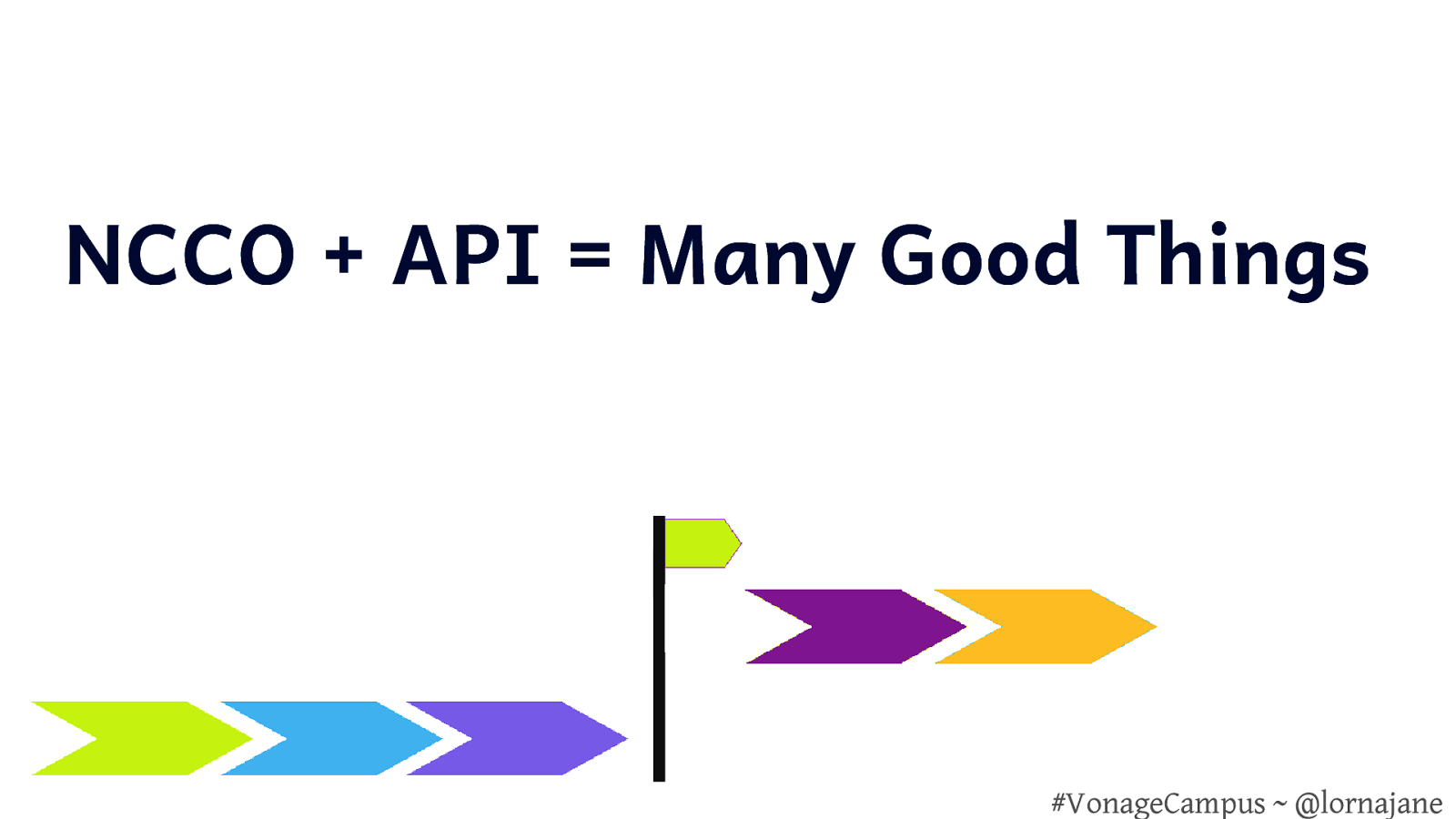
NCCO + API = Many Good Things #VonageCampus ~ @lornajane
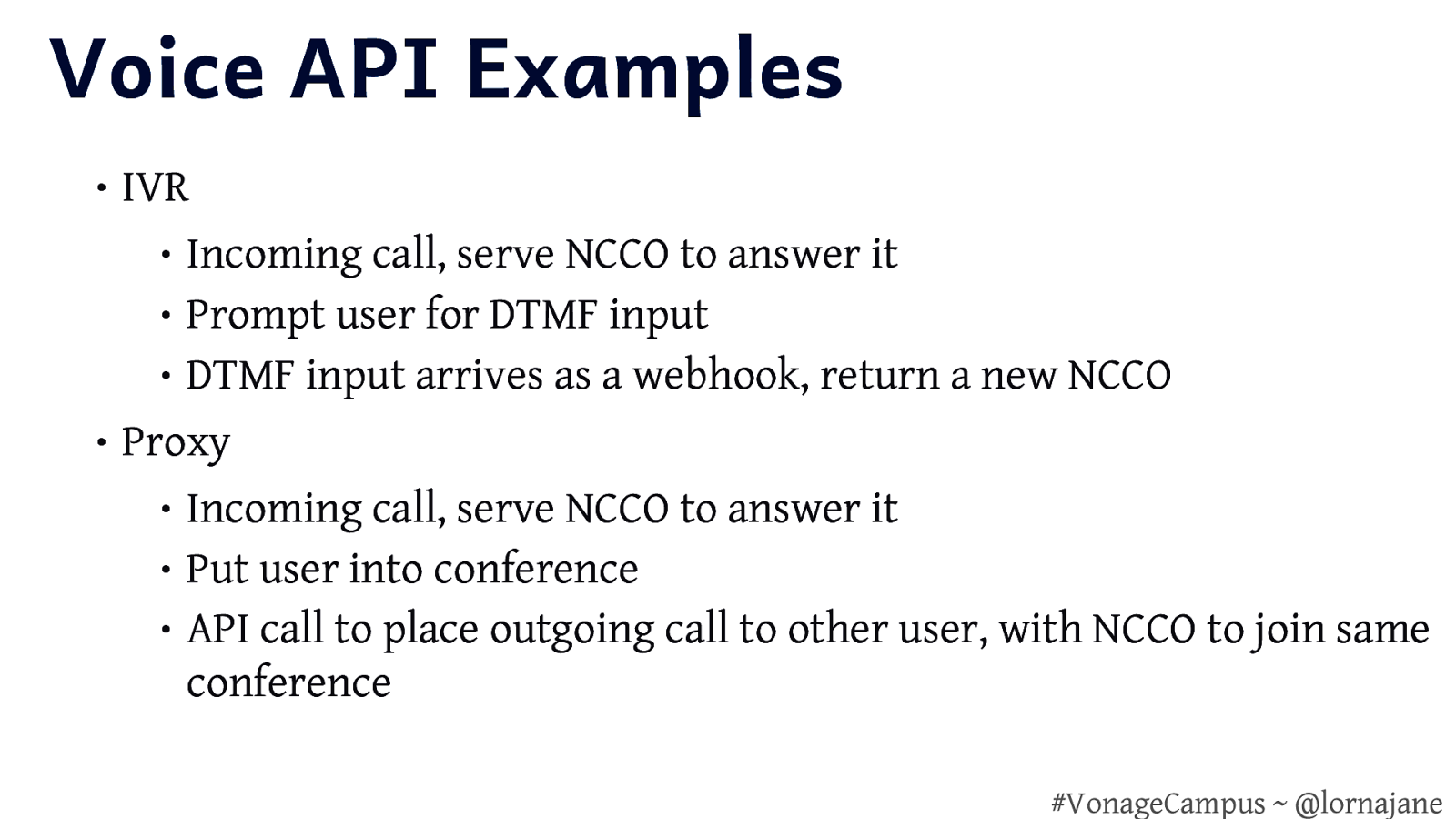
Voice API Examples • IVR • Incoming call, serve NCCO to answer it • Prompt user for DTMF input • DTMF input arrives as a webhook, return a new NCCO • Proxy • Incoming call, serve NCCO to answer it • Put user into conference • API call to place outgoing call to other user, with NCCO to join same conference #VonageCampus ~ @lornajane
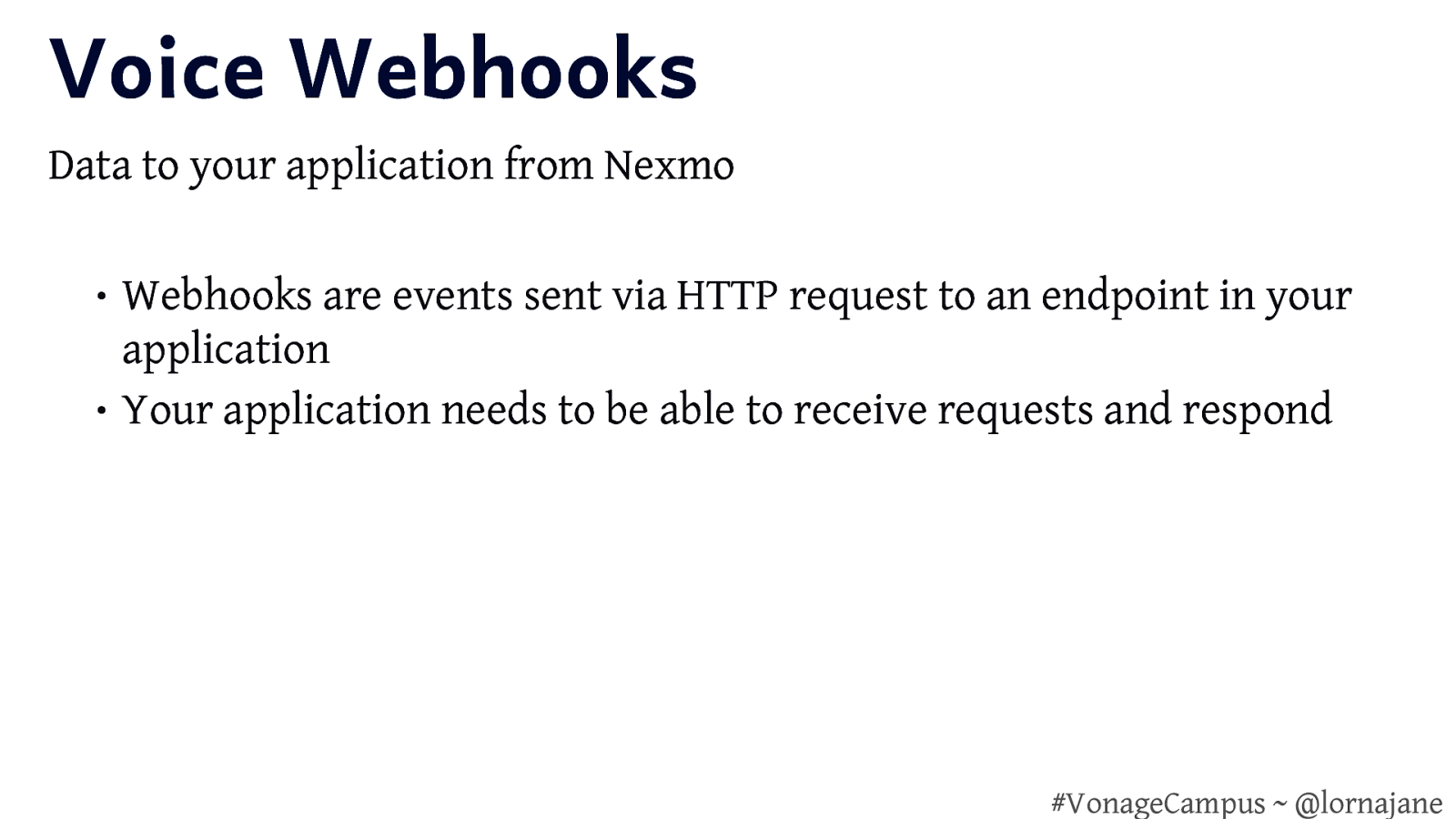
Voice Webhooks Data to your application from Nexmo • Webhooks are events sent via HTTP request to an endpoint in your application • Your application needs to be able to receive requests and respond #VonageCampus ~ @lornajane
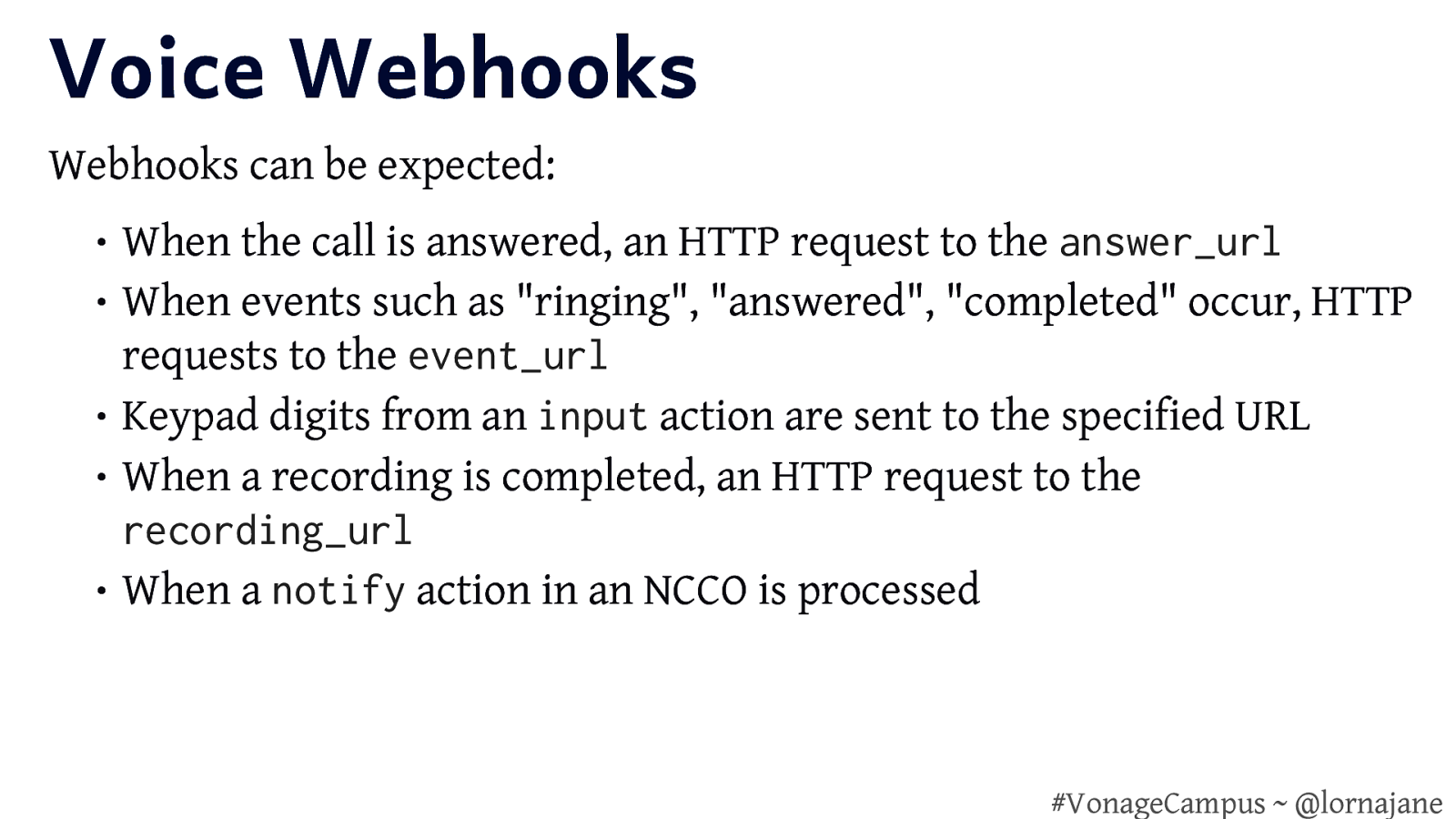
Voice Webhooks Webhooks can be expected: • When the call is answered, an HTTP request to the answer_url • When events such as “ringing”, “answered”, “completed” occur, HTTP requests to the event_url • Keypad digits from an input action are sent to the specified URL • When a recording is completed, an HTTP request to the recording_url • When a notify action in an NCCO is processed #VonageCampus ~ @lornajane
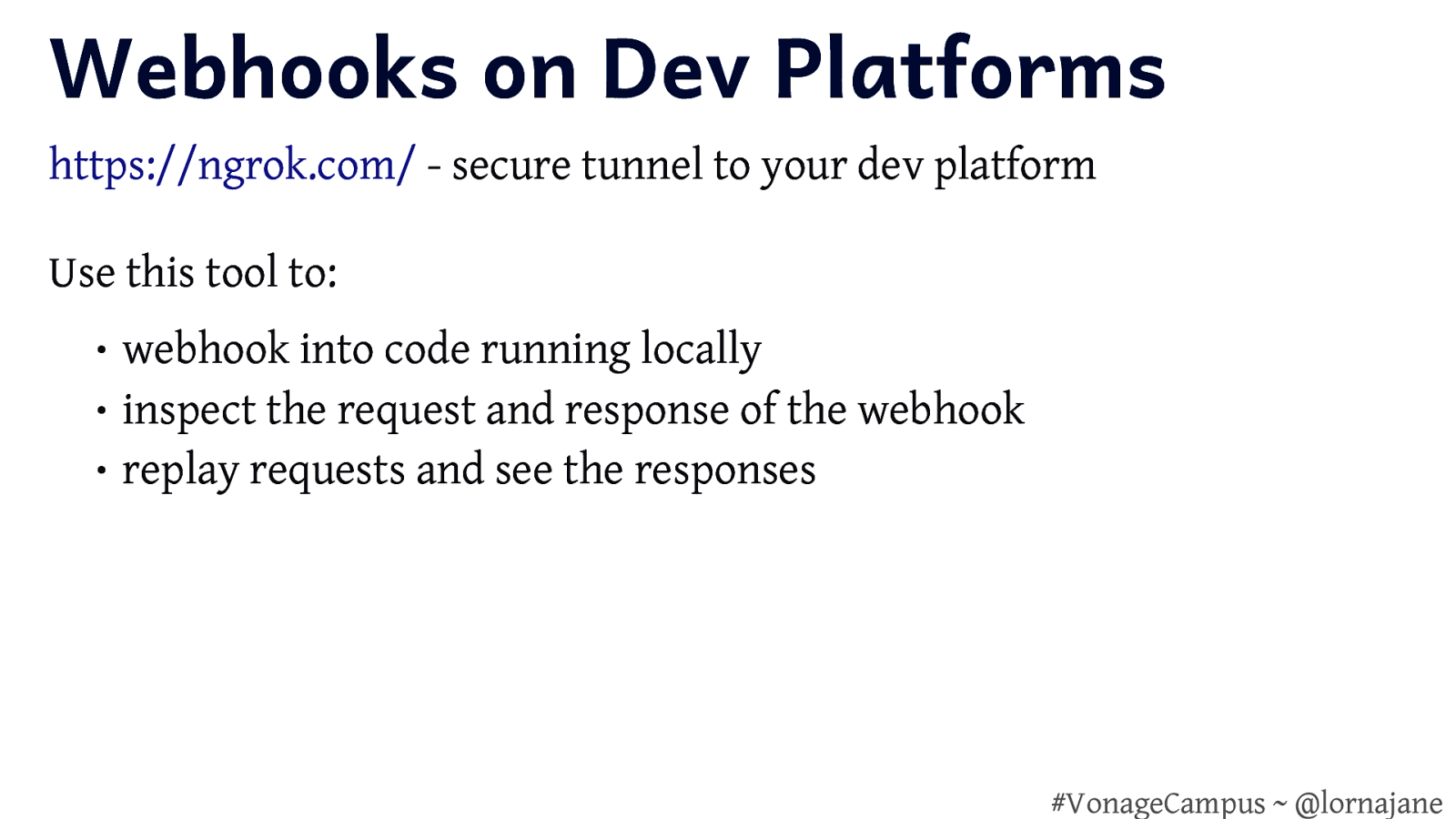
Webhooks on Dev Platforms https://ngrok.com/ - secure tunnel to your dev platform Use this tool to: • webhook into code running locally • inspect the request and response of the webhook • replay requests and see the responses #VonageCampus ~ @lornajane
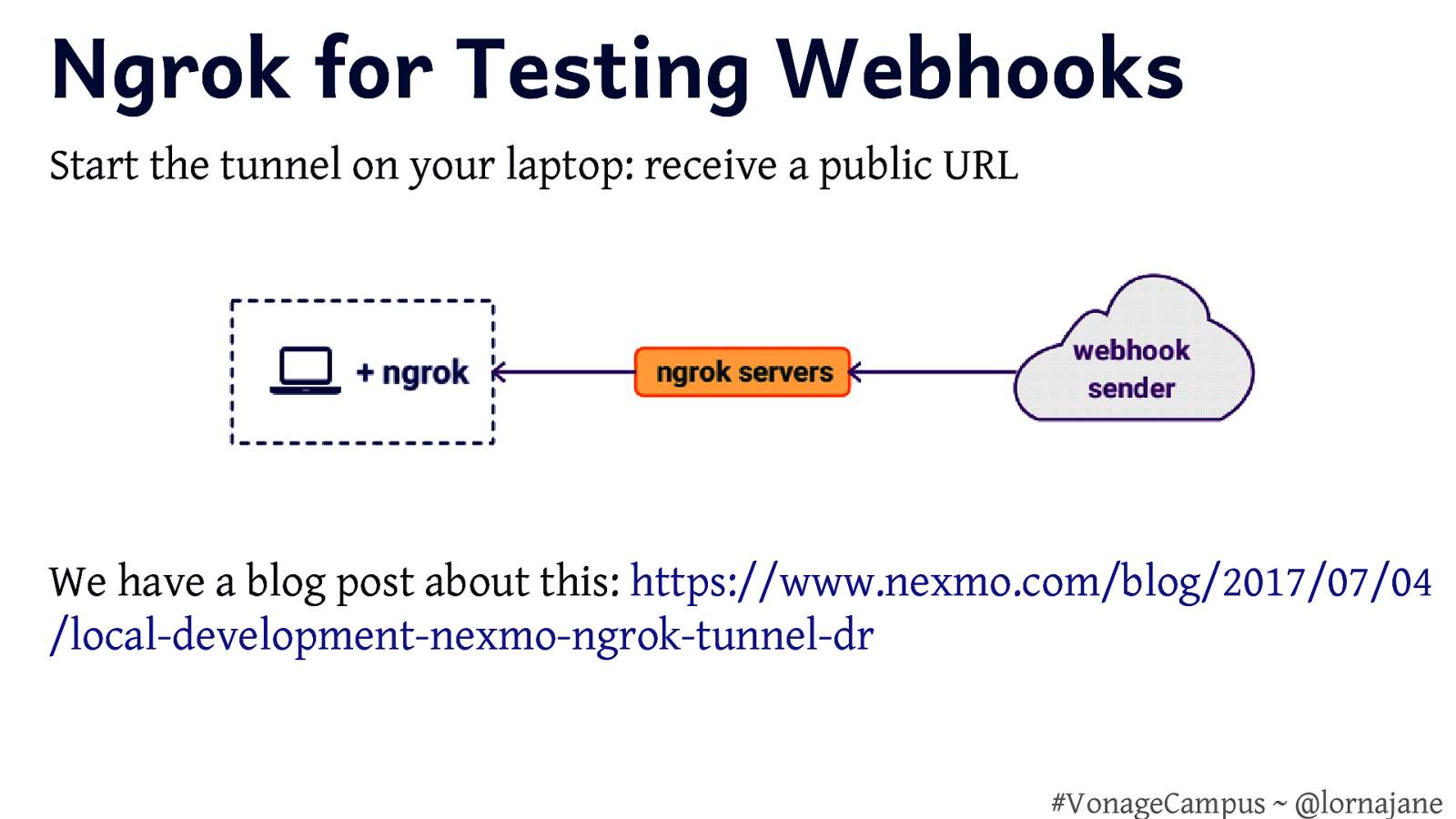
Ngrok for Testing Webhooks Start the tunnel on your laptop: receive a public URL We have a blog post about this: https://www.nexmo.com/blog/2017/07/04 /local-development-nexmo-ngrok-tunnel-dr #VonageCampus ~ @lornajane
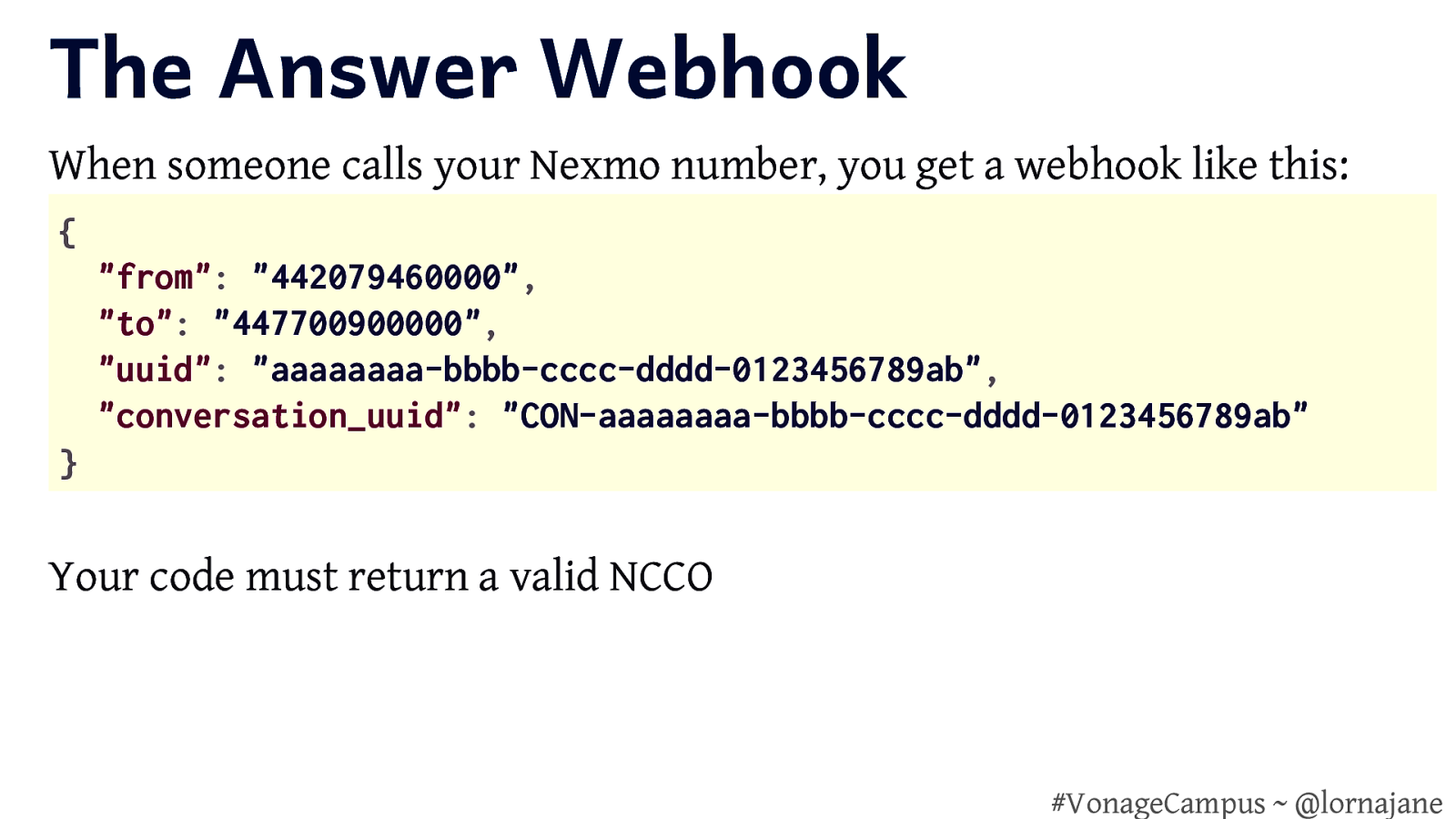
The Answer Webhook When someone calls your Nexmo number, you get a webhook like this: { “from”: “442079460000”, “to”: “447700900000”, “uuid”: “aaaaaaaa-bbbb-cccc-dddd-0123456789ab”, “conversation_uuid”: “CON-aaaaaaaa-bbbb-cccc-dddd-0123456789ab” } Your code must return a valid NCCO #VonageCampus ~ @lornajane
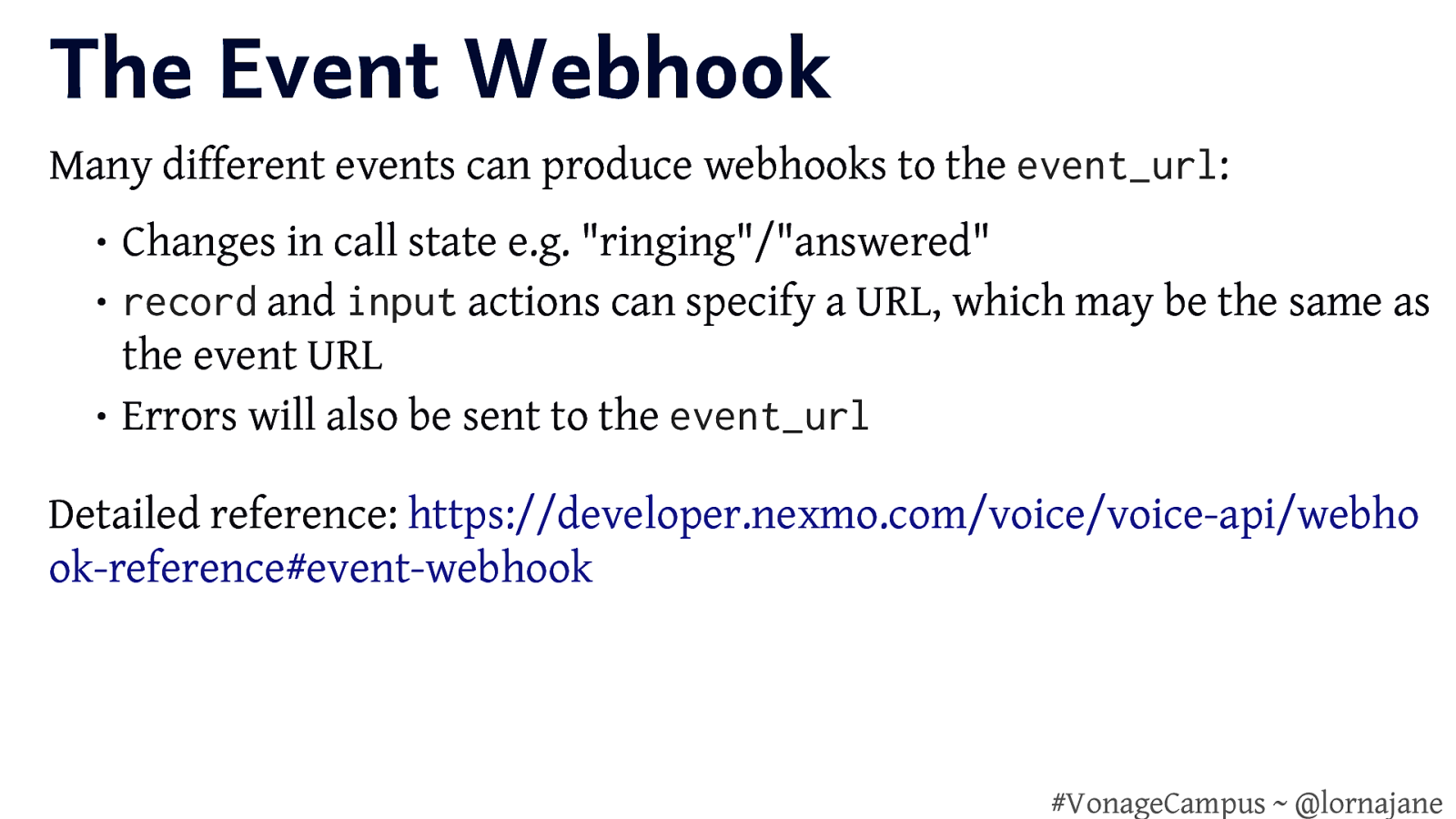
The Event Webhook Many different events can produce webhooks to the event_url: • Changes in call state e.g. “ringing”/”answered” • record and input actions can specify a URL, which may be the same as the event URL • Errors will also be sent to the event_url Detailed reference: https://developer.nexmo.com/voice/voice-api/webho ok-reference#event-webhook #VonageCampus ~ @lornajane
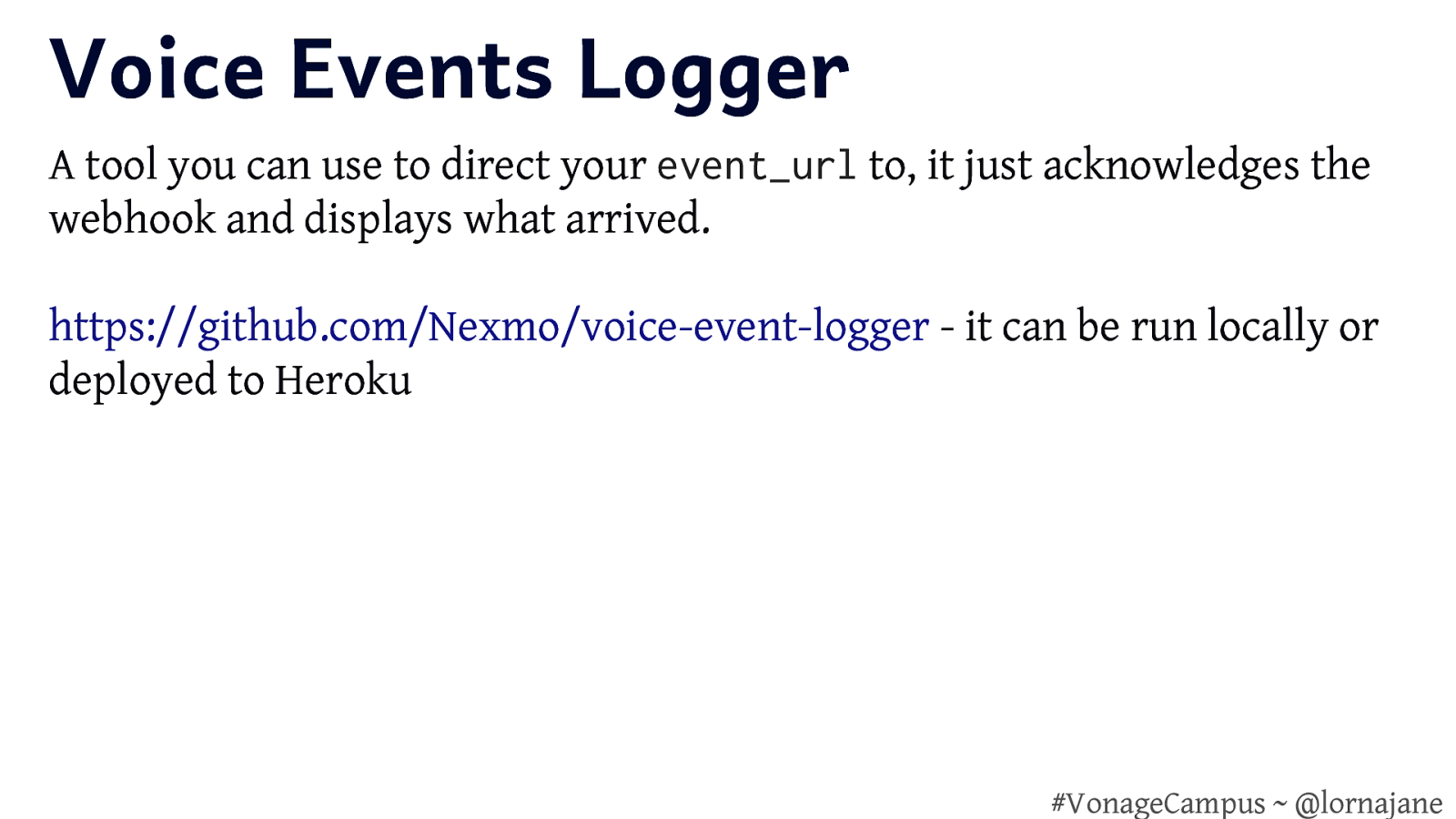
Voice Events Logger A tool you can use to direct your event_url to, it just acknowledges the webhook and displays what arrived. https://github.com/Nexmo/voice-event-logger - it can be run locally or deployed to Heroku #VonageCampus ~ @lornajane
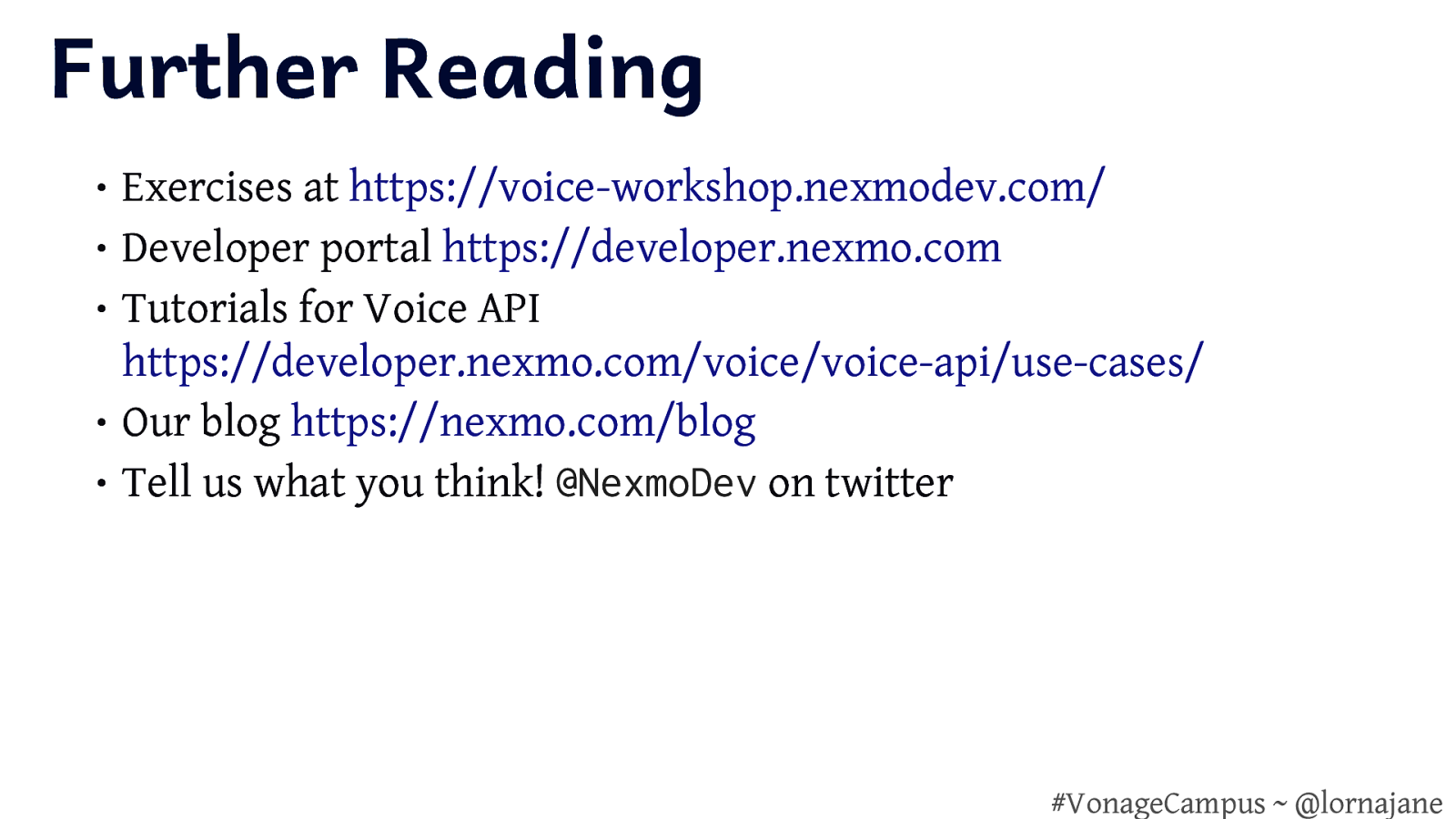
Further Reading • Exercises at https://voice-workshop.nexmodev.com/ • Developer portal https://developer.nexmo.com • Tutorials for Voice API https://developer.nexmo.com/voice/voice-api/use-cases/ • Our blog https://nexmo.com/blog • Tell us what you think! @NexmoDev on twitter #VonageCampus ~ @lornajane